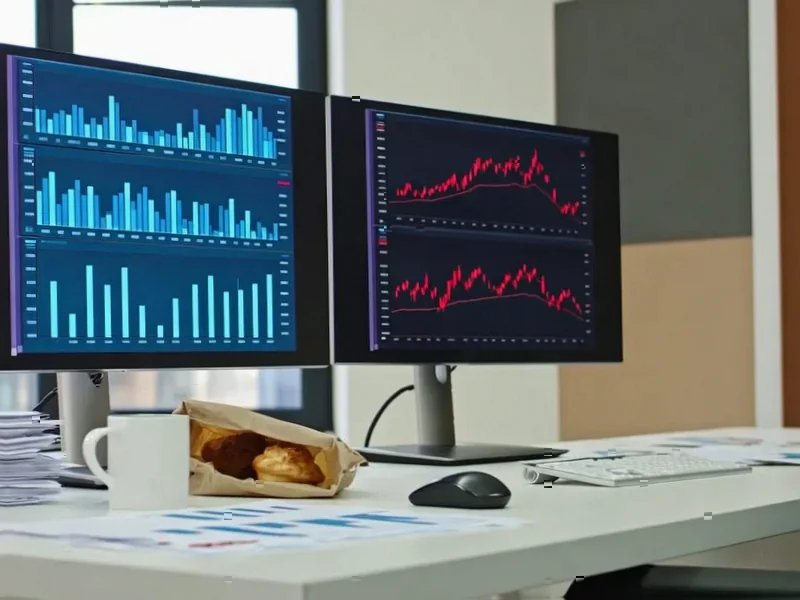According to ZDNet, Synex Linux is a minimal distribution specifically designed for small and mid-sized businesses that boots exceptionally fast and runs smoothly with impressive stability. The distribution offers both GNOME and KDE Plasma versions and can be downloaded and installed for free, featuring a five-minute installation process that gets users to a login prompt in seconds. Unlike many distributions, Synex ships with minimal preinstalled software, requiring users to install applications through GUI app stores or Flatpak integration, though it lacks a welcome tool to guide new users. The Argentina-based distribution is available in multiple languages and can be downloaded from the official Synex website or Sourceforge.
The Strategic Business Model Behind Minimalism
Synex’s approach represents a calculated business strategy that targets a specific pain point in the small business market: wasted time and resources. While the distribution itself is free, the real business opportunity lies in support services, customization, and enterprise solutions. This follows the classic open-source business model where the core product is free, but businesses pay for reliability, security updates, and specialized support. For small businesses migrating from Windows, the lightning-fast boot times translate directly into productivity gains and reduced IT overhead. The minimalist approach also reduces attack surfaces, potentially lowering security costs and minimizing downtime from system bloat.
Strategic Positioning Against Established Players
Synex enters a crowded market dominated by Ubuntu, Red Hat Enterprise Linux, and various Windows solutions, but its positioning is strategically distinct. By focusing specifically on small and mid-sized businesses rather than enterprise or consumer markets, Synex carves out a niche that larger players often overlook. The distribution’s Argentine origin provides additional strategic advantages, potentially offering better localization for Latin American markets and lower development costs compared to Silicon Valley-based competitors. This geographical positioning could make Synex particularly appealing to businesses in emerging markets where cost sensitivity and localization are critical factors.
Why This Approach Matters Now
The timing of Synex’s emergence aligns perfectly with several market trends. The post-pandemic shift toward smaller, more agile businesses has created demand for cost-effective technology solutions that don’t sacrifice performance. Meanwhile, growing concerns about software bloat and privacy in mainstream operating systems have made minimalist alternatives increasingly attractive. The current economic climate, with businesses scrutinizing every expense, makes free open-source solutions particularly compelling. Additionally, the maturation of Flatpak and similar universal packaging systems has finally made minimal distributions practical for business use, solving the application availability problem that previously hindered adoption.
Revenue Opportunities and Market Impact
While Synex itself is free, the ecosystem it enables creates multiple revenue streams. The most immediate opportunity lies in professional support services, where businesses typically pay for guaranteed response times and specialized expertise. There’s also potential for hardware partnerships, where manufacturers could pre-install Synex on business-oriented devices. The distribution’s minimal nature creates opportunities for third-party software vendors to offer curated application bundles specifically for small business needs. Perhaps most significantly, Synex could disrupt the traditional software licensing model by demonstrating that businesses don’t need expensive, bloated operating systems to achieve their productivity goals.
The Hidden Challenges for Business Adoption
Despite its advantages, Synex faces significant hurdles in business adoption. The lack of preinstalled business applications means companies must invest time in configuring their systems, which represents hidden costs. The absence of enterprise-grade management tools could limit scalability for growing businesses. Furthermore, the reliance on users finding their own applications through app stores creates training and support challenges. Most critically, Synex will need to establish a robust security update process and demonstrate long-term commitment to gain business trust—something that has doomed many promising Linux distributions in the past.
Strategic Outlook and Market Potential
Synex’s success will depend on its ability to build an ecosystem around its minimalist core. The distribution could become the foundation for specialized business solutions, similar to how Red Hat built an empire around enterprise Linux. The real test will be whether the developers can maintain the delicate balance between minimalism and usability while building the support infrastructure businesses require. If Synex can establish itself as the go-to solution for small businesses seeking efficiency and control, it could capture significant market share from both proprietary solutions and more bloated Linux distributions. The ultimate measure of success won’t be download numbers, but rather how many businesses actually deploy it in production environments and build their operations around it.




